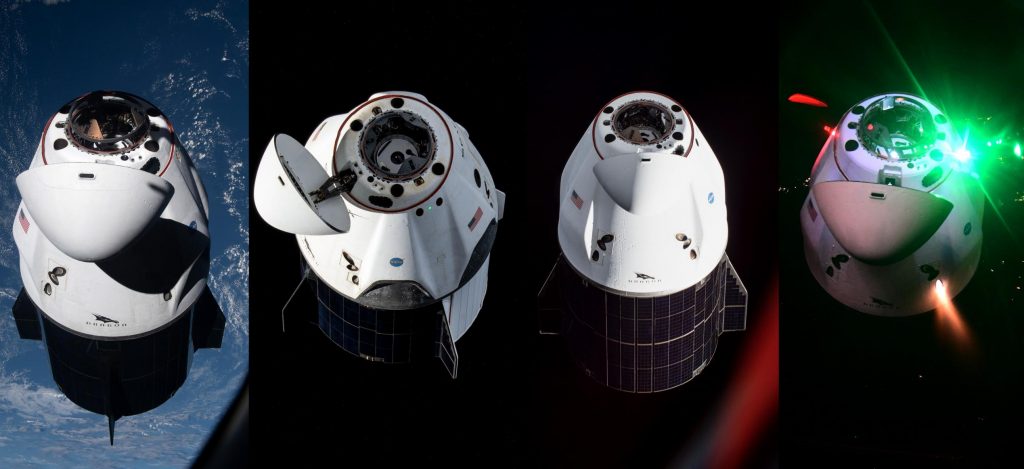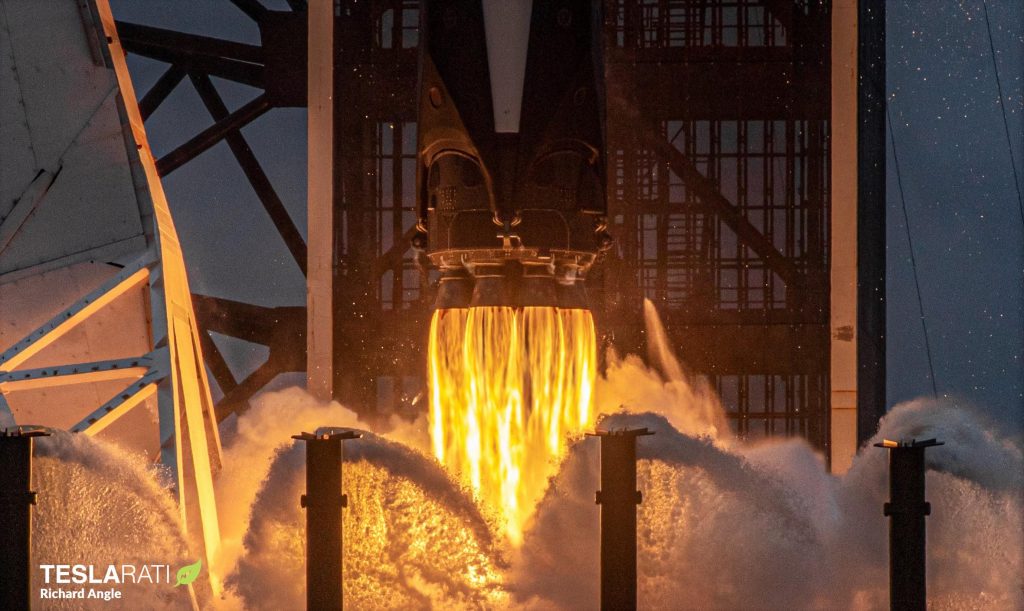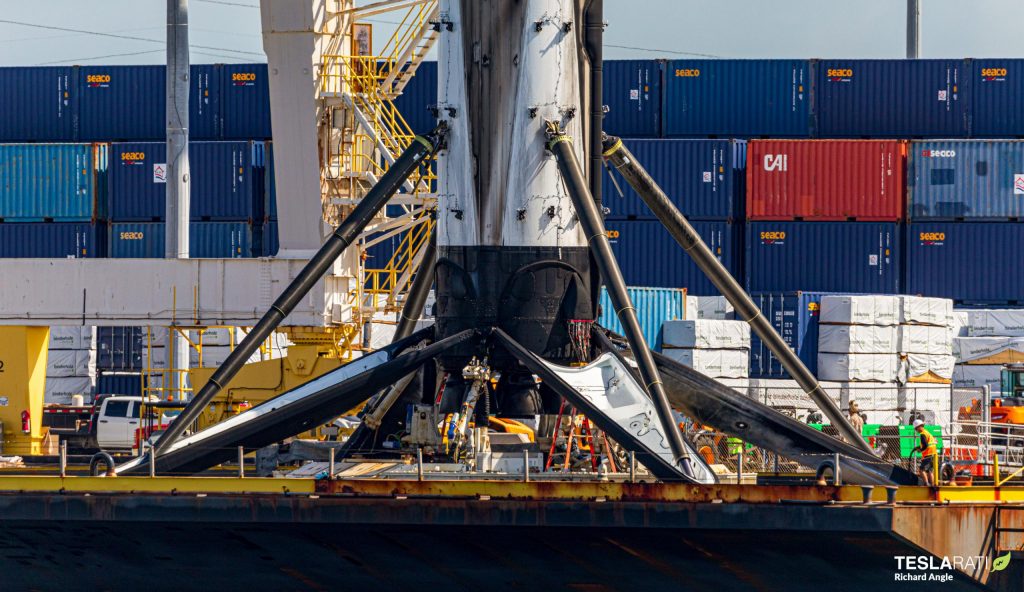

News
SpaceX’s next Crew Dragon astronaut mission settles on Halloween launch
After initially moving forward 24 hours from October 31st to October 30th, SpaceX’s next Crew Dragon astronaut mission has slipped back to its initial Halloween launch date.
Again scheduled to lift off around 2:21 am EDT (UTC-4) on Halloween morning, SpaceX’s Falcon 9 rocket and Crew Dragon spacecraft are on track to support their third operational NASA astronaut launch since November 2020. Known as Crew-3, the mission will carry NASA astronauts Thomas Marshburn, Raja Chari, Kayla Barron, and ESA (European Space Agency) astronaut Matthias Maurer to the International Space Station (ISS). A few weeks later, Crew-3 will take over command of the US ISS segment, allowing Crew Dragon Crew-2 astronauts Shane Kimbrough, Megan McArthur, Akihiko Hoshide, and Thomas Pesquet to return to Earth after some six and a half months in orbit.
Unlike Crew-2, which became the first astronaut launch in history to use a flight-proven orbital space capsule in April 2021, Crew-3 astronauts will head to the ISS inside a new capsule. Likely to be Dragon 2 capsule #10 (C210), SpaceX says it will be the first of at least two new Crew Dragons scheduled to join the company’s fleet of reusable crew capsules between now and mid-2022. Each Dragon 2 capsule (Crew and Cargo variants) is designed and rated to complete at least five orbital spaceflights before retirement and there’s a good chance that that five-flight limit can be expanded if needed.

New Dragon aside, Crew-3 will still be the second time professional astronauts launch on a flight-proven liquid rocket booster – SpaceX’s Falcon 9. Between Crew-2 and Crew-3, SpaceX also launched four private, rookie astronauts – a world first – on a flight-proven Dragon and Falcon 9 booster, further strengthening the pair’s pedigree as the first privately-developed, reusable, human-rated rocket and spacecraft. Crew-3 will be Falcon 9 booster B1067’s second Dragon launch and second launch overall after a successful Cargo Dragon launch debut in June 2021.


When the Commercial Crew Program culminated in NASA awarding SpaceX $2.6B to develop Crew Dragon and Boeing $4.2B to develop Starliner, the goal was always to field two redundant crew transfer vehicles and then alternate launches of those vehicles every six or so months. However, despite charging NASA almost two-thirds more than SpaceX to provide the exact same service, Boeing’s Starliner program has run into numerous hardware and software issues over the last two years, causing major delays.
As a result, more than 31 months after a SpaceX Crew Dragon aced its first uncrewed test flight to and from the space station and almost 18 months after Dragon launched its first two astronauts, Boeing’s Starliner has yet to complete a successful orbital test flight and yet to launch a single astronaut. Recently, Boeing’s second uncrewed test flight – required after Starliner suffered near-catastrophic software failures on its first attempt – has been delayed by chronic valve issues from July or August 2021 to May 2022. NASA has also begun shuffling astronauts originally scheduled to launch on Starliner’s Crew-1 equivalent mission to Crew Dragon’s August 2022 Crew-5 mission.

Starliner’s first crewed flight test (CFT) is entirely dependent upon the near-flawless success of OFT-2 – far from guaranteed. Per Boeing’s senior Starliner program manager, the current best-case scenario would see the company launch CFT six months after OFT-2 – no earlier than November 2022 if OFT-2 flies next May. In other words, based on the program’s history of chronic delays, it’s more likely than not that Starliner won’t fly crew until early 2023. Given Crew-5’s August 2022 launch target, Boeing would have to ace its crewed flight test, pass extensive NASA post-flight reviews, and achieve NASA certification in just a month or two for SpaceX and Crew Dragon to not end up flying Crew-6 in February or March 2023.
Put simply, Boeing has gotten itself into a situation where it would take a minor miracle for Starliner to complete a single operational launch before SpaceX launches all six NASA Crew Dragon missions currently on contract – and back to back, no less. Crew-3 will mark the halfway point to a milestone that would have been unfathomable just a few years ago.

Elon Musk
Elon Musk and Tesla AI Director share insights after empty driver seat Robotaxi rides
The executives’ unoccupied tests hint at the rapid progress of Tesla’s unsupervised Robotaxi efforts.

Tesla CEO Elon Musk and AI Director Ashok Elluswamy celebrated Christmas Eve by sharing personal experiences with Robotaxi vehicles that had no safety monitor or occupant in the driver’s seat. Musk described the system’s “perfect driving” around Austin, while Elluswamy posted video from the back seat, calling it “an amazing experience.”
The executives’ unoccupied tests hint at the rapid progress of Tesla’s unsupervised Robotaxi efforts.
Elon and Ashok’s firsthand Robotaxi insights
Prior to Musk and the Tesla AI Director’s posts, sightings of unmanned Teslas navigating public roads were widely shared on social media. One such vehicle was spotted in Austin, Texas, which Elon Musk acknowleged by stating that “Testing is underway with no occupants in the car.”
Based on his Christmas Eve post, Musk seemed to have tested an unmanned Tesla himself. “A Tesla with no safety monitor in the car and me sitting in the passenger seat took me all around Austin on Sunday with perfect driving,” Musk wrote in his post.
Elluswamy responded with a 2-minute video showing himself in the rear of an unmanned Tesla. The video featured the vehicle’s empty front seats, as well as its smooth handling through real-world traffic. He captioned his video with the words, “It’s an amazing experience!”
Towards Unsupervised operations
During an xAI Hackathon earlier this month, Elon Musk mentioned that Tesla owed be removing Safety Monitors from its Robotaxis in Austin in just three weeks. “Unsupervised is pretty much solved at this point. So there will be Tesla Robotaxis operating in Austin with no one in them. Not even anyone in the passenger seat in about three weeks,” he said. Musk echoed similar estimates at the 2025 Annual Shareholder Meeting and the Q3 2025 earnings call.
Considering the insights that were posted Musk and Elluswamy, it does appear that Tesla is working hard towards operating its Robotaxis with no safety monitors. This is quite impressive considering that the service was launched just earlier this year.
Elon Musk
Starlink passes 9 million active customers just weeks after hitting 8 million
The milestone highlights the accelerating growth of Starlink, which has now been adding over 20,000 new users per day.

SpaceX’s Starlink satellite internet service has continued its rapid global expansion, surpassing 9 million active customers just weeks after crossing the 8 million mark.
The milestone highlights the accelerating growth of Starlink, which has now been adding over 20,000 new users per day.
9 million customers
In a post on X, SpaceX stated that Starlink now serves over 9 million active users across 155 countries, territories, and markets. The company reached 8 million customers in early November, meaning it added roughly 1 million subscribers in under seven weeks, or about 21,275 new users on average per day.
“Starlink is connecting more than 9M active customers with high-speed internet across 155 countries, territories, and many other markets,” Starlink wrote in a post on its official X account. SpaceX President Gwynne Shotwell also celebrated the milestone on X. “A huge thank you to all of our customers and congrats to the Starlink team for such an incredible product,” she wrote.
That growth rate reflects both rising demand for broadband in underserved regions and Starlink’s expanding satellite constellation, which now includes more than 9,000 low-Earth-orbit satellites designed to deliver high-speed, low-latency internet worldwide.
Starlink’s momentum
Starlink’s momentum has been building up. SpaceX reported 4.6 million Starlink customers in December 2024, followed by 7 million by August 2025, and 8 million customers in November. Independent data also suggests Starlink usage is rising sharply, with Cloudflare reporting that global web traffic from Starlink users more than doubled in 2025, as noted in an Insider report.
Starlink’s momentum is increasingly tied to SpaceX’s broader financial outlook. Elon Musk has said the satellite network is “by far” the company’s largest revenue driver, and reports suggest SpaceX may be positioning itself for an initial public offering as soon as next year, with valuations estimated as high as $1.5 trillion. Musk has also suggested in the past that Starlink could have its own IPO in the future.
News
NVIDIA Director of Robotics: Tesla FSD v14 is the first AI to pass the “Physical Turing Test”
After testing FSD v14, Fan stated that his experience with FSD felt magical at first, but it soon started to feel like a routine.

NVIDIA Director of Robotics Jim Fan has praised Tesla’s Full Self-Driving (Supervised) v14 as the first AI to pass what he described as a “Physical Turing Test.”
After testing FSD v14, Fan stated that his experience with FSD felt magical at first, but it soon started to feel like a routine. And just like smartphones today, removing it now would “actively hurt.”
Jim Fan’s hands-on FSD v14 impressions
Fan, a leading researcher in embodied AI who is currently solving Physical AI at NVIDIA and spearheading the company’s Project GR00T initiative, noted that he actually was late to the Tesla game. He was, however, one of the first to try out FSD v14.
“I was very late to own a Tesla but among the earliest to try out FSD v14. It’s perhaps the first time I experience an AI that passes the Physical Turing Test: after a long day at work, you press a button, lay back, and couldn’t tell if a neural net or a human drove you home,” Fan wrote in a post on X.
Fan added: “Despite knowing exactly how robot learning works, I still find it magical watching the steering wheel turn by itself. First it feels surreal, next it becomes routine. Then, like the smartphone, taking it away actively hurts. This is how humanity gets rewired and glued to god-like technologies.”
The Physical Turing Test
The original Turing Test was conceived by Alan Turing in 1950, and it was aimed at determining if a machine could exhibit behavior that is equivalent to or indistinguishable from a human. By focusing on text-based conversations, the original Turing Test set a high bar for natural language processing and machine learning.
This test has been passed by today’s large language models. However, the capability to converse in a humanlike manner is a completely different challenge from performing real-world problem-solving or physical interactions. Thus, Fan introduced the Physical Turing Test, which challenges AI systems to demonstrate intelligence through physical actions.
Based on Fan’s comments, Tesla has demonstrated these intelligent physical actions with FSD v14. Elon Musk agreed with the NVIDIA executive, stating in a post on X that with FSD v14, “you can sense the sentience maturing.” Musk also praised Tesla AI, calling it the best “real-world AI” today.








